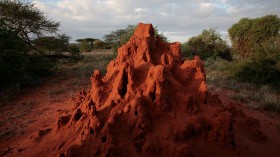Right before he left, Pope Benedict XVI signed off on a 90-minute broadcast on the Shroud of Turin, a linen believed by some to have been the cloth Jesus was buried in after his crucifixion.
The broadcast, scheduled to take place on Easter Saturday, will mark the first time in 30 years that the shrould will appear on television.
"It will be a message of intense spiritual scope, charged with positivity which will help hope never to be lost," said the archbishop of Turin, Cesare Nosiglia, according to the Guardian.
What's more, the program is taking place as new claims that the fabric dates from the time of Jesus arise, despite previous studies that it is a product of medieval forgery.
Led by Italian associate professor of mechanical and thermal measurement at Padua University Giulio Fanti, a study published by the ENEA Research Centre of Frascati, states that the cloth dates back to a period of time between 280 BC and 220 AD.
Fanti, a Catholic, believes that the carbon-14 study used in 1988 that established it to the scientific world as a medieval object, "is not statistically reliable."
Fanti is not the first to criticize the 1988 study.
A study published in Termochimica Acta in 2005 estimated the Shroud of Turin to to be anywhere from 1,300 to 3,000 years old. Author Raymond Rogers, a retired chemist from the Los Alamos National Laboratory, argued that the 1988 study analyzed a part of the cloth inconsistent with the main part of the fabric, probably woven in to repair the cloth after one of the two fires it was known to have survived.
"The radiocarbon sample has completely different chemical properties than the main part of the shroud relic," he said.
Rogers did agree, however, that the part of the cloth sampled in the 1988 study does in fact date back to the medieval period.
"The sample tested was dyed using technology that began to appear in Italy about the time the Crusaders' last bastion fell to the Mameluke Turks in 1291 AD," Rogers told BBC.
© 2024 NatureWorldNews.com All rights reserved. Do not reproduce without permission.





